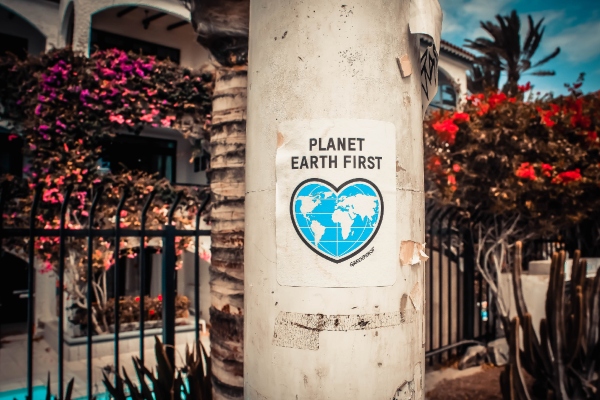
Veganism has become a popular lifestyle choice for many people around the world. It involves avoiding all animal products, including meat, dairy, eggs, and honey, and instead consuming plant-based foods. While some people choose to go vegan for health reasons, others do it to reduce their environmental impact.
One of the biggest benefits of veganism is its positive impact on the environment. Animal agriculture is a major contributor to greenhouse gas emissions, deforestation, and water pollution. By choosing to go vegan, individuals can significantly reduce their carbon footprint and help protect the planet. In fact, according to the United Nations, a global shift towards a vegan diet is necessary to combat the worst effects of the climate crisis. But the benefits of veganism don’t stop there. Going vegan can also help protect wildlife and their habitats, particularly in areas like Texas where many species are under threat.
The Impact of Animal Agriculture on the Environment
Greenhouse Gas Emissions
Animal agriculture is a significant contributor to greenhouse gas emissions. According to a study by Stanford University and the University of California, Berkeley, animal agriculture is responsible for 51% of global greenhouse gas emissions. Methane and nitrous oxide, which are produced by livestock, have a much greater warming effect than carbon dioxide. Methane has a warming effect that is 28 times greater than carbon dioxide over a 100-year period, while nitrous oxide has a warming effect that is 265 times greater than carbon dioxide over the same period.
Water Use and Pollution
Animal agriculture also has a significant impact on water use and pollution. It takes an enormous amount of water to produce meat, with some estimates suggesting that it takes up to 2,500 gallons of water to produce a single pound of beef. Animal waste also pollutes waterways, leading to eutrophication and dead zones. The Environmental Protection Agency (EPA) reports that roughly 80% of ammonia emissions in the U.S. come from animal waste, which contributes to air pollution and acid rain.
Land Use and Deforestation
Animal agriculture is also responsible for a significant amount of land use and deforestation. According to a report by the Worldwatch Institute, animal agriculture is responsible for 51% of global greenhouse gas emissions and 80% of deforestation in the Amazon rainforest. The land used for animal agriculture could be used for other purposes, such as growing crops to feed people directly.
Wildlife Habitat Destruction
Animal agriculture also contributes to the destruction of wildlife habitats. The expansion of animal agriculture leads to the destruction of natural ecosystems, which can lead to species extinction. The use of pesticides and other chemicals in animal agriculture also contributes to the destruction of wildlife habitats.
In conclusion, animal agriculture has a significant impact on the environment, including greenhouse gas emissions, water use and pollution, land use and deforestation, and wildlife habitat destruction. Reducing meat consumption and transitioning to plant-based diets can help mitigate these impacts and promote a more sustainable food system.
The Benefits of Veganism for the Environment
Reducing Greenhouse Gas Emissions
One of the most significant benefits of veganism for the environment is its potential to reduce greenhouse gas emissions. Animal agriculture is a significant contributor to greenhouse gas emissions, accounting for up to 18% of global emissions. By reducing or eliminating animal products from our diets, we can significantly reduce our carbon footprint.
Conserving Water
Another benefit of veganism is its potential to conserve water. Animal agriculture requires vast amounts of water for livestock feed and maintenance. For example, it takes approximately 1,800 gallons of water to produce one pound of beef. In contrast, plant-based foods require significantly less water to produce. By adopting a plant-based diet, we can significantly reduce our water footprint.
Preserving Land and Wildlife Habitat
Animal agriculture is also a leading cause of deforestation and habitat destruction. The conversion of natural habitats into farmland to support livestock production has a significant impact on wildlife populations. By reducing our consumption of animal products, we can help preserve natural habitats and protect wildlife populations.
In addition, animal agriculture produces large amounts of ammonia, which can contribute to air and water pollution. By reducing our consumption of animal products, we can help reduce the amount of ammonia released into the environment.
Overall, adopting a vegan or plant-based diet can have significant benefits for the environment. By reducing our carbon and water footprints, preserving natural habitats, and protecting wildlife populations, we can help create a more sustainable future for ourselves and for future generations.
The Connection Between Veganism and Biodiversity
The world’s biodiversity is under threat, with species extinction rates at an all-time high. The Amazon rainforest, one of the most biodiverse regions on the planet, is being destroyed at an alarming rate, primarily to make way for animal agriculture. The connection between veganism and biodiversity is clear: by going vegan, we can help protect the world’s wildlife and their habitats.
Animal agriculture is a leading cause of deforestation, which destroys the habitats of countless species. The Amazon rainforest, for example, is home to millions of species of plants and animals, many of which are found nowhere else on the planet. Yet, every year, vast swathes of the rainforest are cleared to make way for cattle ranches and soybean plantations to feed livestock.
By choosing a vegan diet, we can help reduce the demand for animal products, which in turn reduces the need for deforestation. This helps to protect the habitats of countless species, including those found in the Amazon rainforest.
Moreover, animal agriculture is also a significant contributor to climate change, which is another major threat to biodiversity. As temperatures rise, many species are struggling to adapt, and their populations are declining rapidly. By reducing our consumption of animal products, we can help reduce greenhouse gas emissions, which can help slow the rate of climate change and give species more time to adapt.
In conclusion, the connection between veganism and biodiversity is clear. By choosing a vegan diet, we can help protect the world’s wildlife and their habitats, including those found in the Amazon rainforest.






